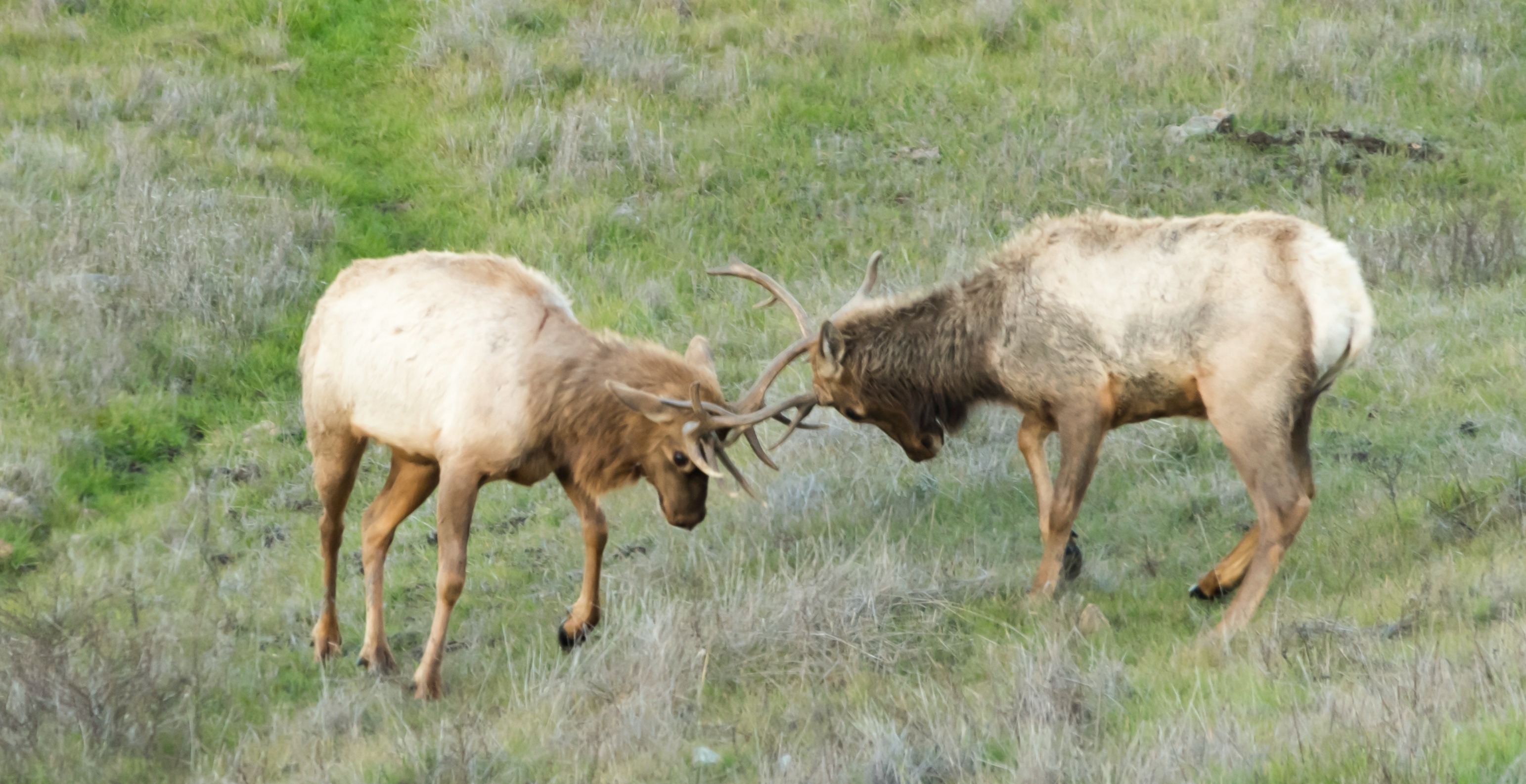Bordering Santa Clara Valley to the east is the Diablo Range, which is home to a rare population of tule elk that roam the hillsides. And August through November is a critical time for these animals, because it’s breeding, or rut season!
Keep reading to learn more about tule elk.
Tule elk are large, weighing hundreds of pounds and averaging seven feet long and 4-5 feet tall. These ungulates, or hooved mammals, are light brown with a darker brown mane around their necks, and a white rump, or backside. Their babies, or calves, resemble deer fawns, with light brown spotted coats. Tule elk are grazers, consuming annual and perennial grasses, herbs, woody shrubs, and trees.
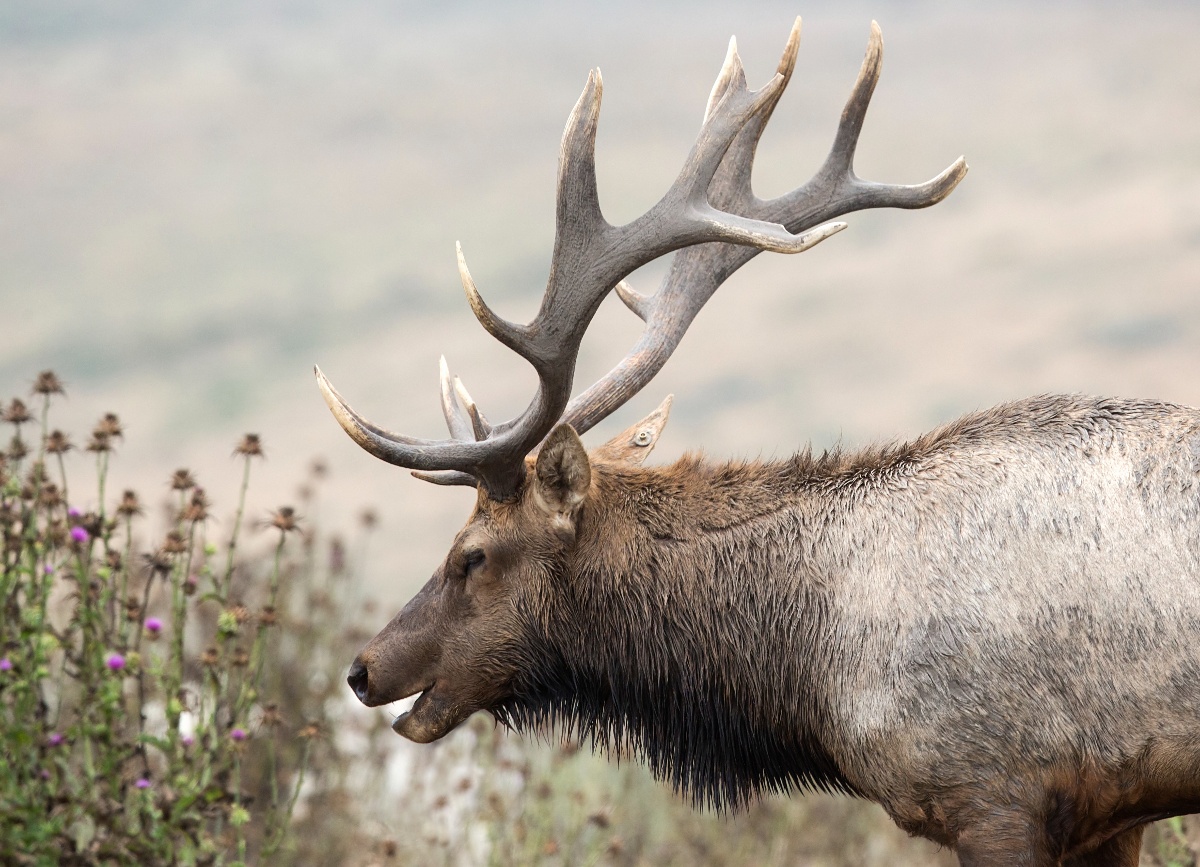
Tule elk are grazers (Cait Hutnik)
Fun fact: an adult elk often eats around 15 pounds of food each day!
Historically, tule elk’s grazing habits played an essential role in managing the amount of vegetation found in these native California landscapes and preventing large-scale wildfires, a job now largely taken on by cattle. In fact, cattle grazing is complimentary to the native elk grazing because the cattle eat the non-native grasses that originated from the same place as, and evolved alongside, the cattle.
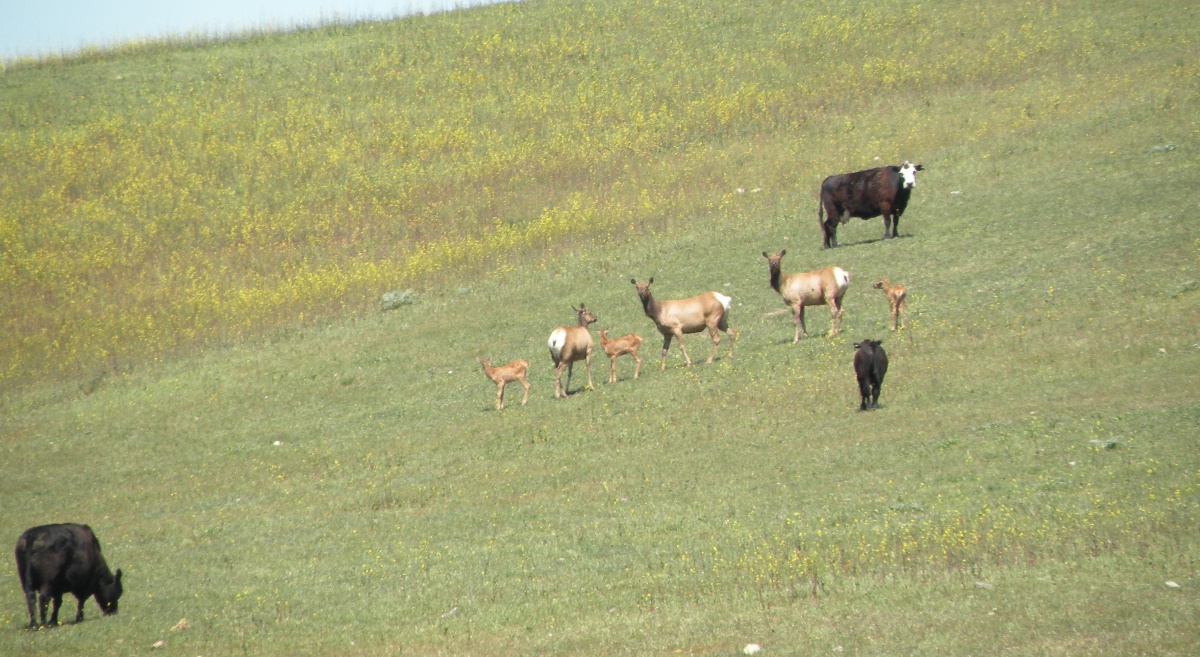
Tule elk coexist with cows at Máyyan 'Ooyákma – Coyote Ridge Open Space Preserve (Stu Weiss)
During rut season, which peaks in October and November, the most common breeding ritual for these animals is called bugling (pronounced “byoo-guh-ling"). The male elk, or bull, makes loud noises to attract a female elk, known as a cow. The gestation period is roughly 255 days, and calves are born around May. The average female has five to six calves in her lifetime, but only around 10% of males successfully mate, which makes the process highly competitive and often causes fighting between the bulls. When bulls fight, they put on dramatic displays, repeatedly clashing their antlers together.
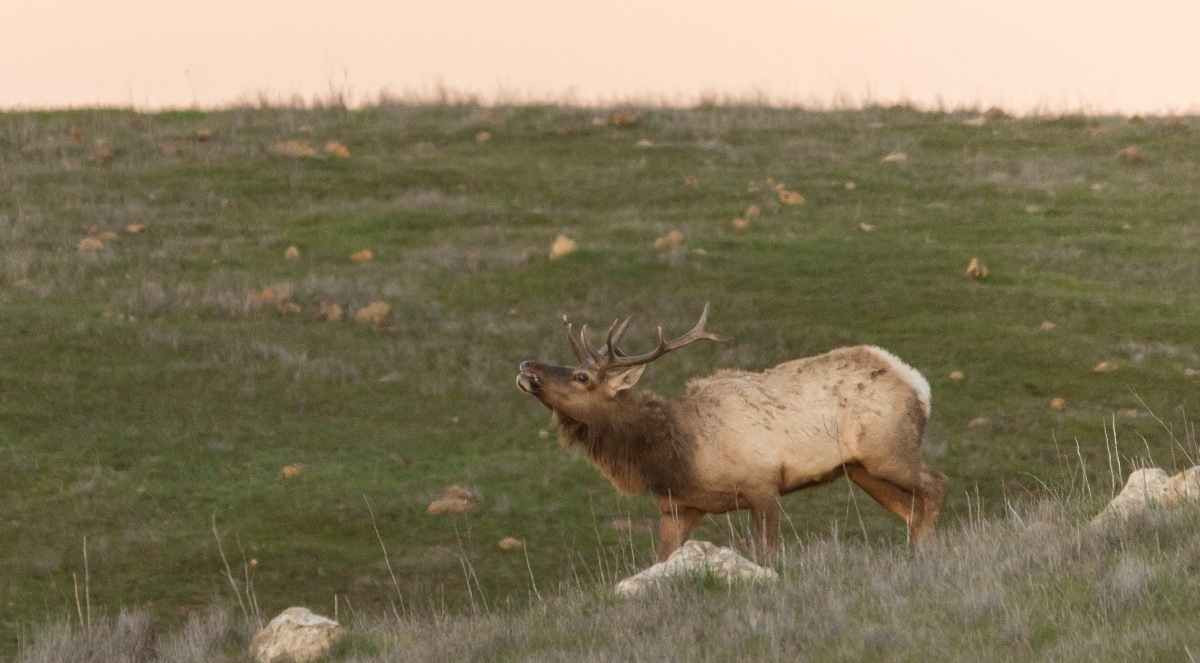
A tule elk bull bugles to attract females at Máyyan 'Ooyákma – Coyote Ridge Open Space Preserve (Derek Neumann)
Endemic to California, tule elk are found nowhere else in the United States. Starting in the 1800s, these animals, once abundant, were hunted to near extinction until they received federal protection in the 1970s. Now, there are an estimated 5,700 individuals roaming throughout California, and numbers are increasing.
While the species has made a remarkable recovery over the last two centuries and the population is largely increasing, they are still threatened by habitat fragmentation and destruction. Depending on the quality of the habitat they occupy, some elk can travel over 15 miles throughout the year to meet their needs for food, water, and shelter.
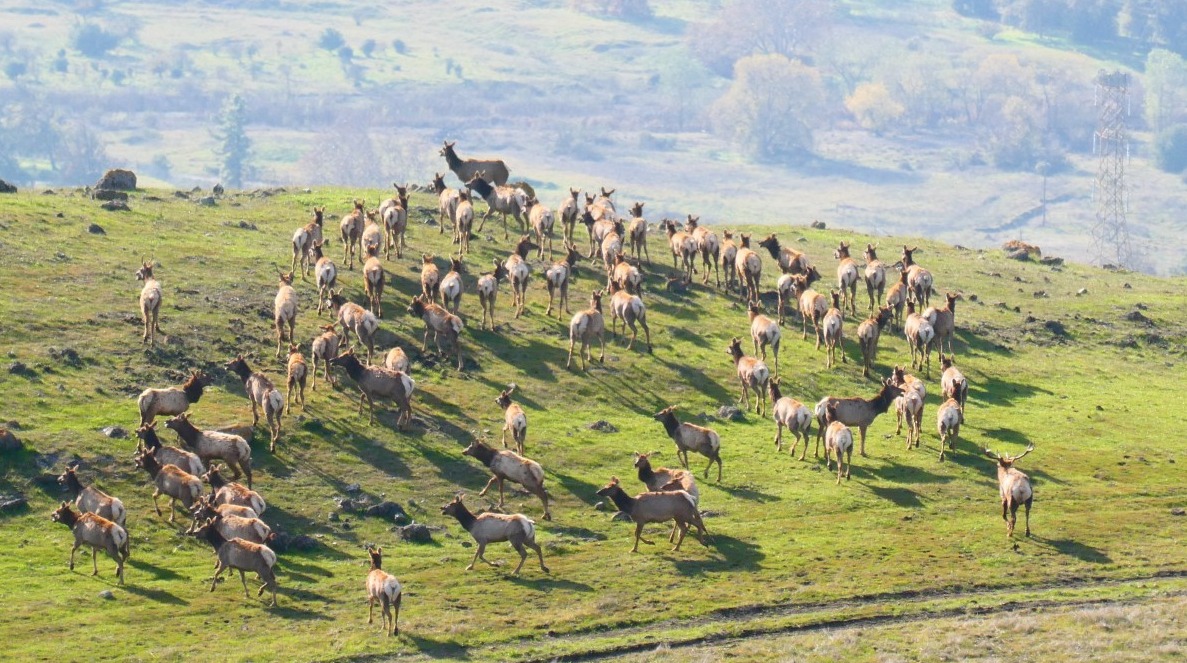
Máyyan 'Ooyákma – Coyote Ridge's local herd of tule elk (Mike Hundt)
The population of tule elk that are local to Santa Clara County are found in the Diablo Range, moving north and south along the mountains as food and water are available. Máyyan 'Ooyákma – Coyote Ridge Open Space Preserve, which opened to the public on August 31, 2023, is part of this range, supporting the species in the south Bay Area. Tule elk herds can also be found in Point Reyes, the San Luis Reservoir, Pacheco State Park, and a few other places throughout California.
To learn more about the unique wildlife at Máyyan 'Ooyákma – Coyote Ridge, click here, or click here to learn how you can access this one-of-a-kind open space preserve.
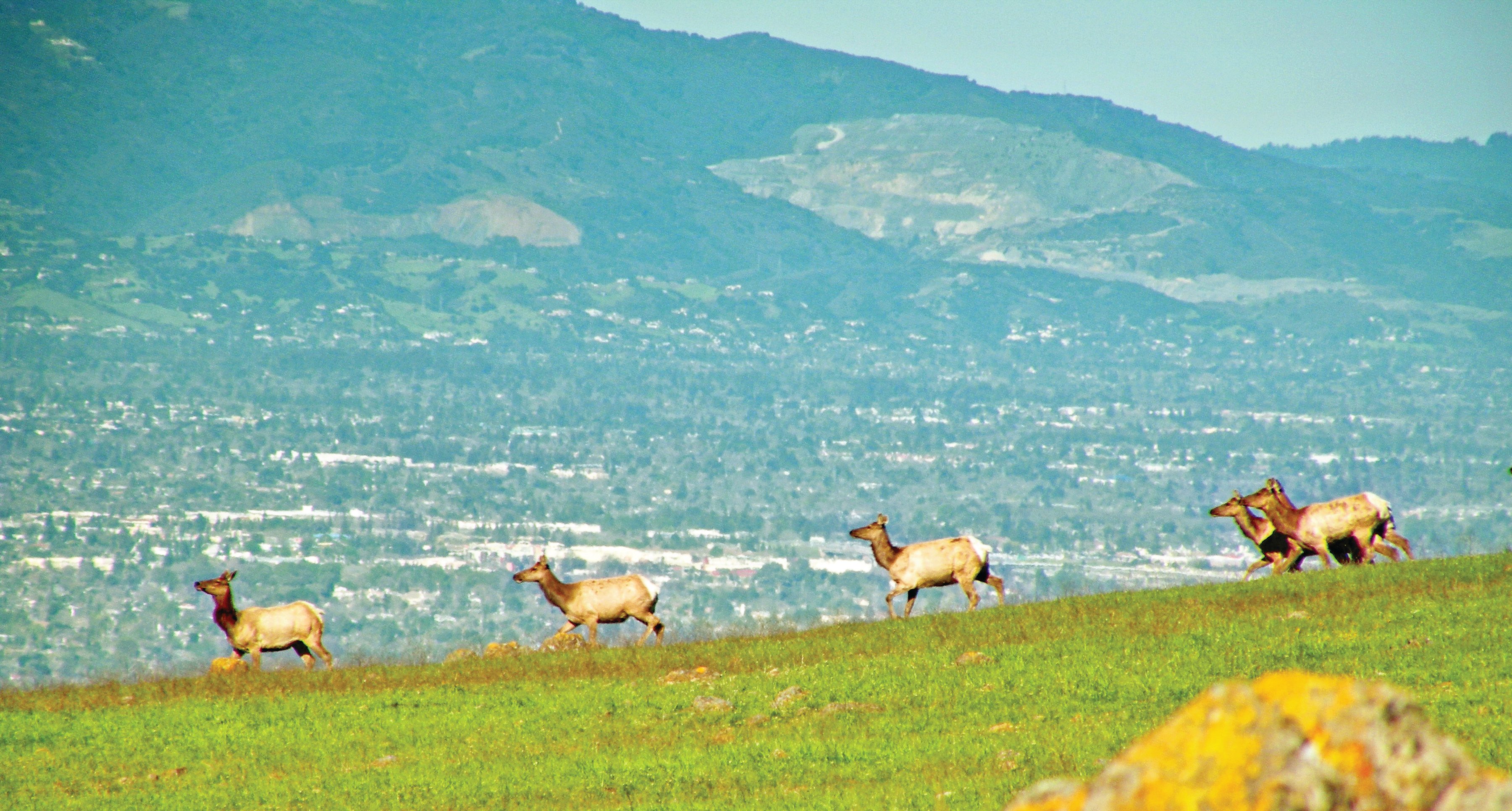
Tule elk at Máyyan 'Ooyákma – Coyote Ridge Open Space Preserve (Stu Weiss)
